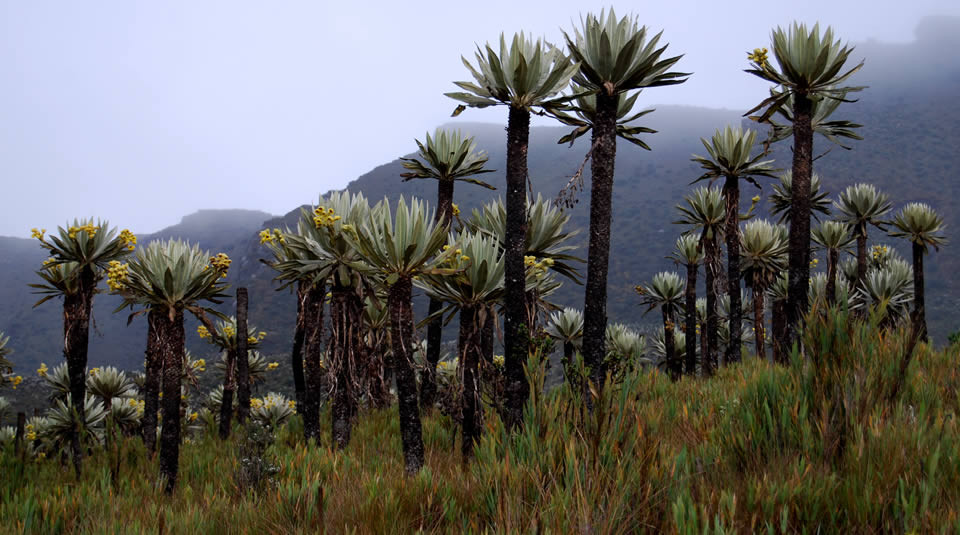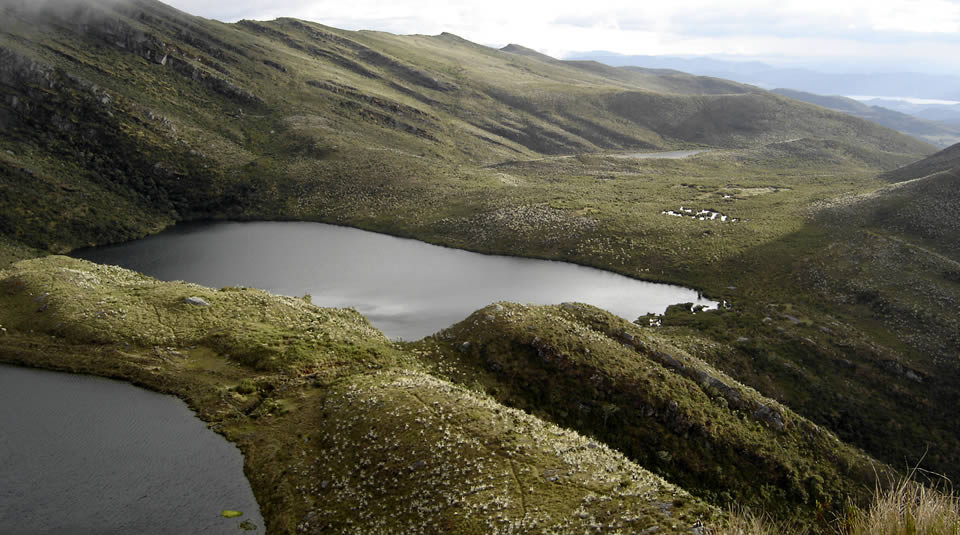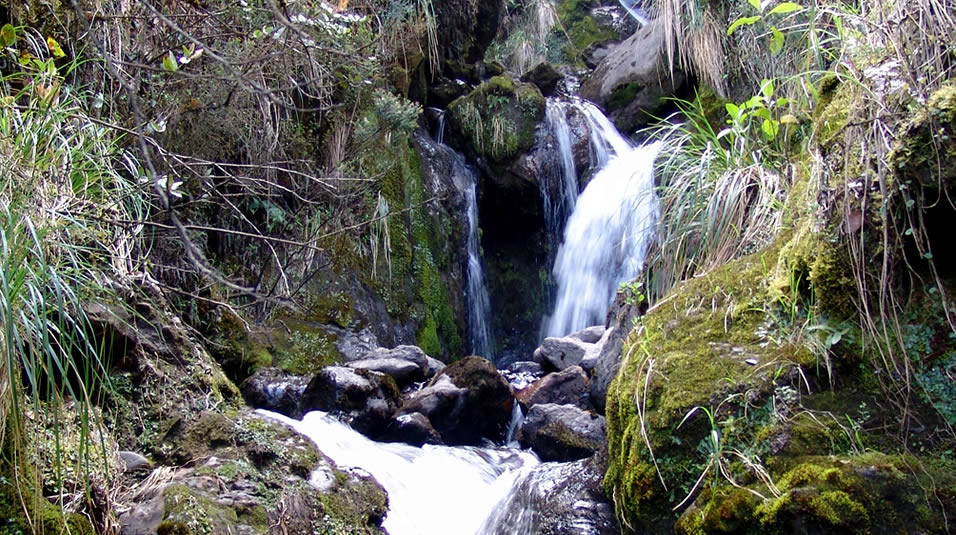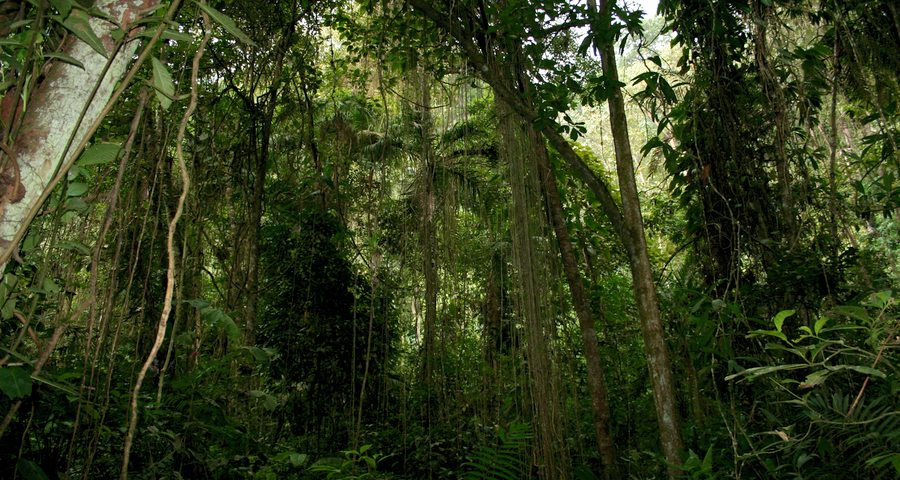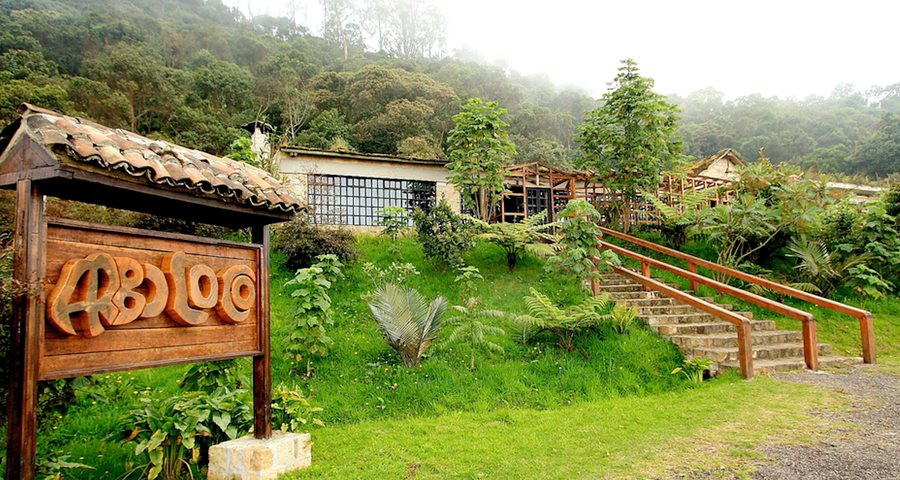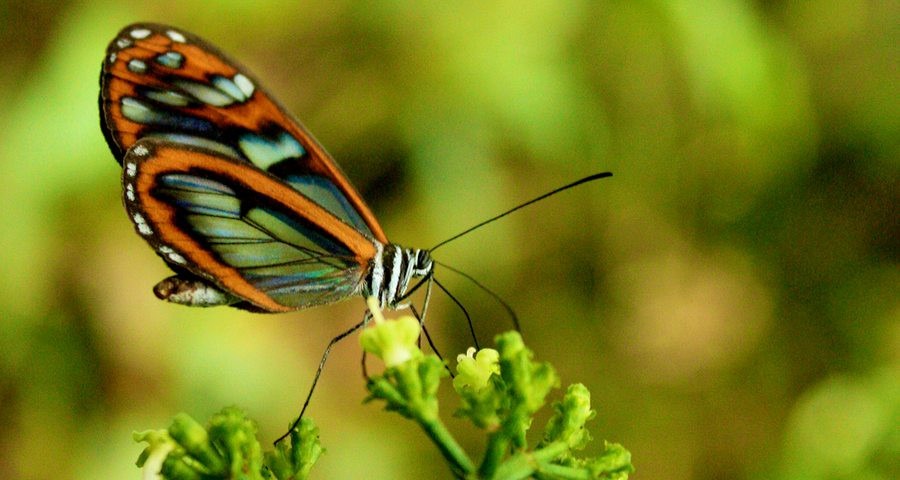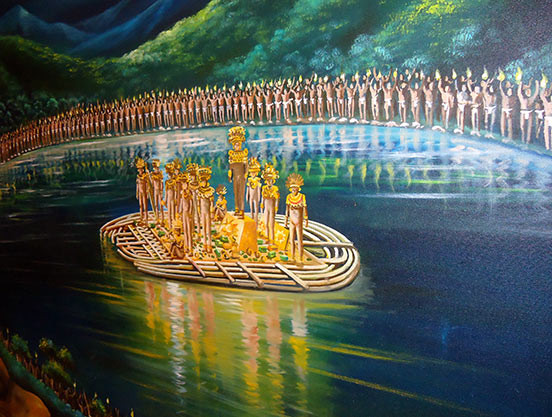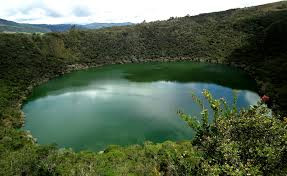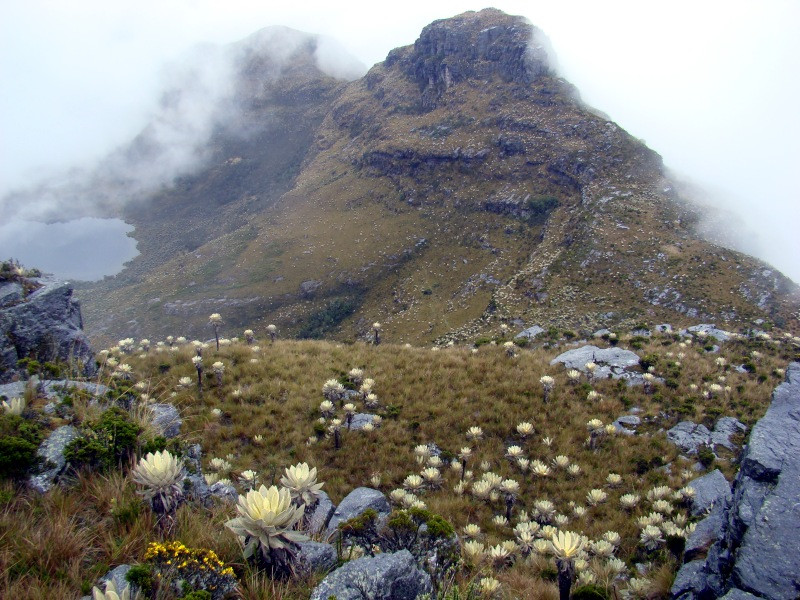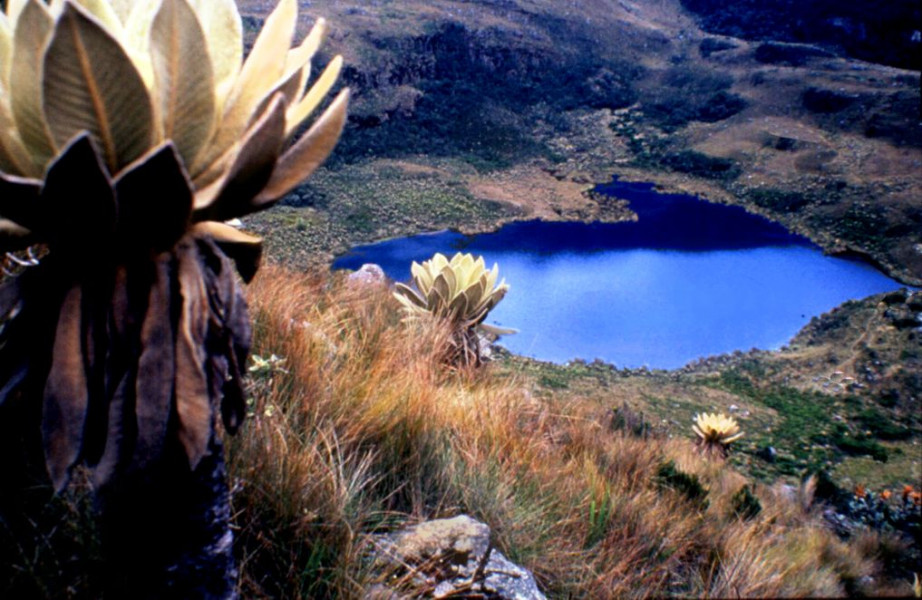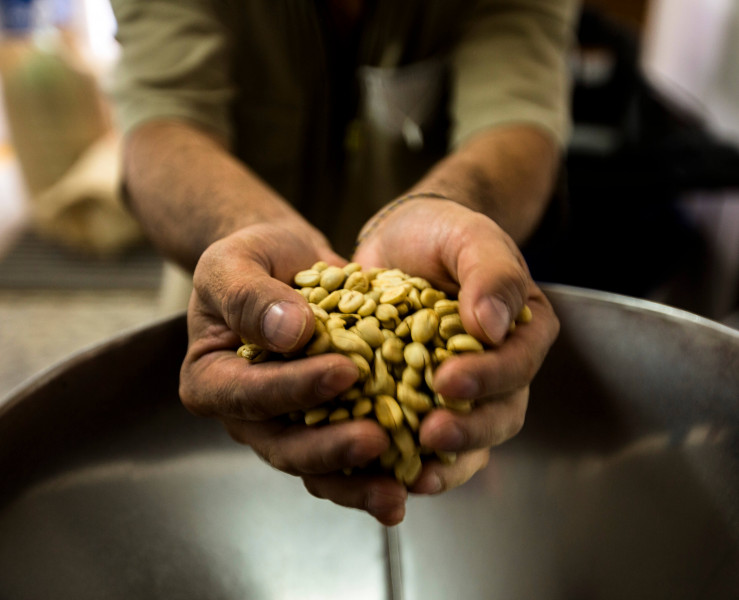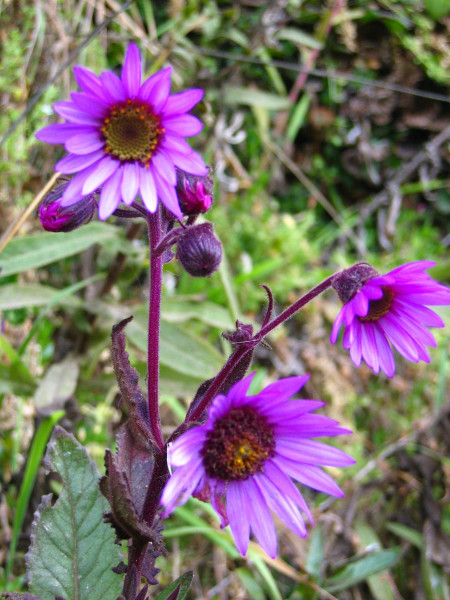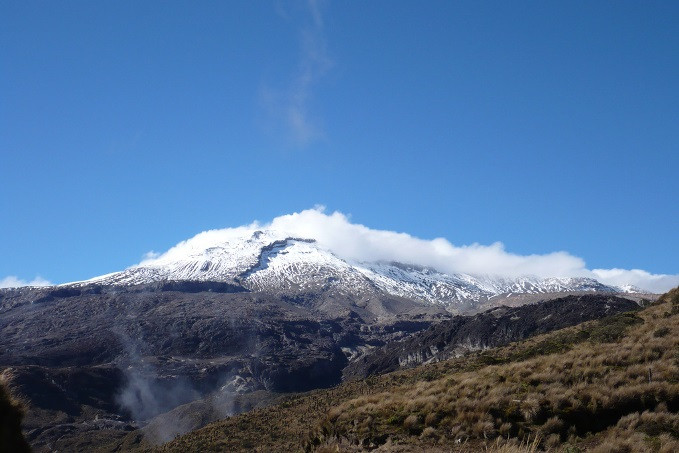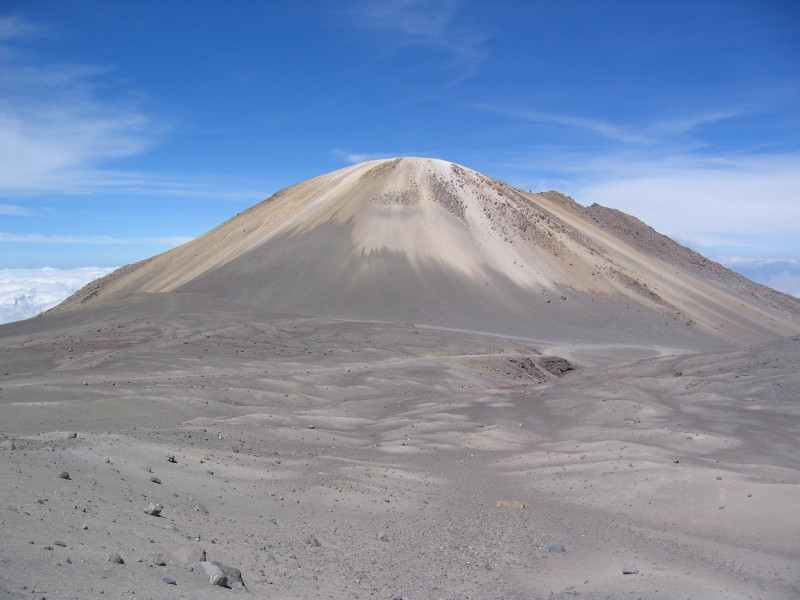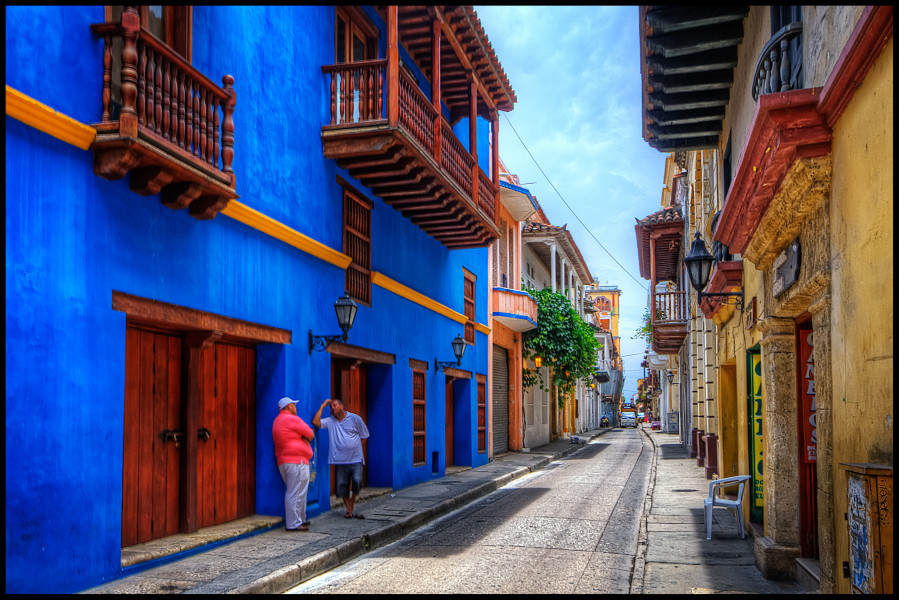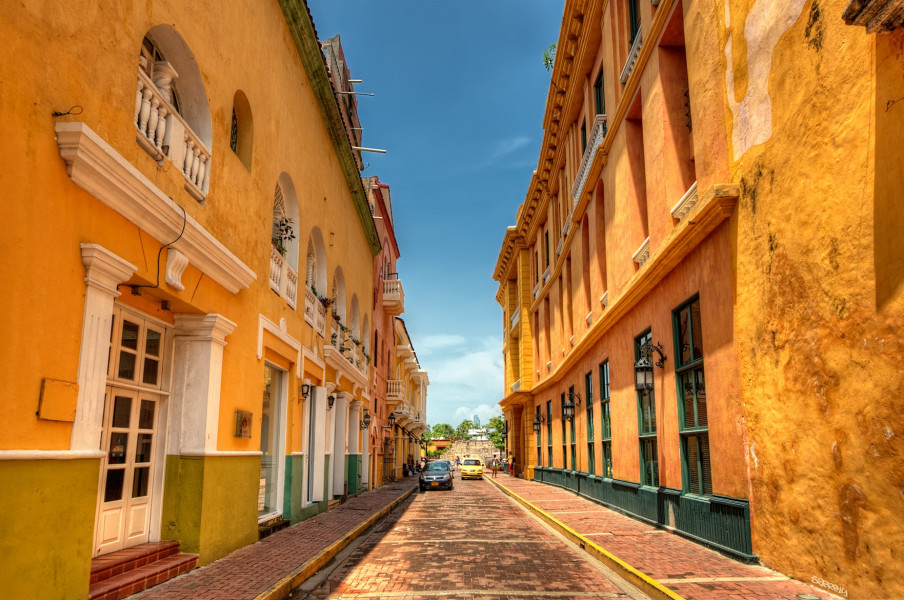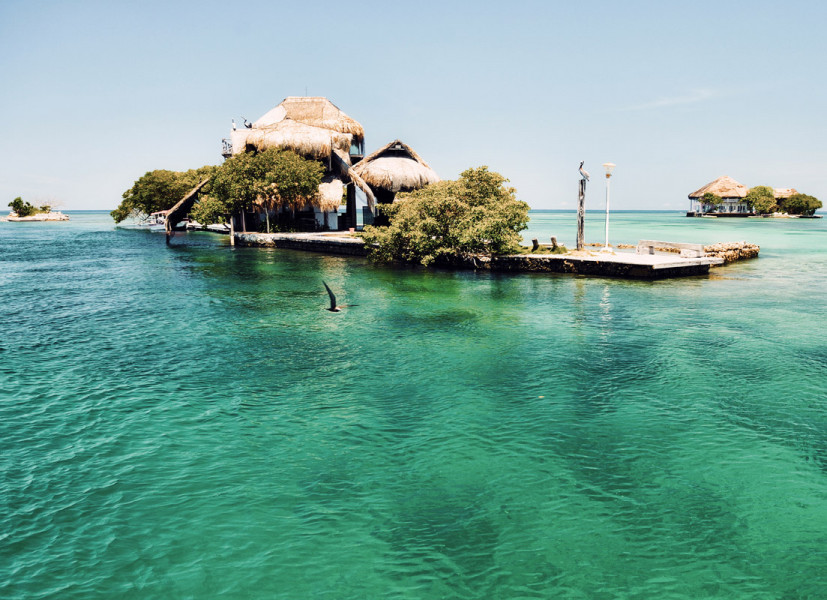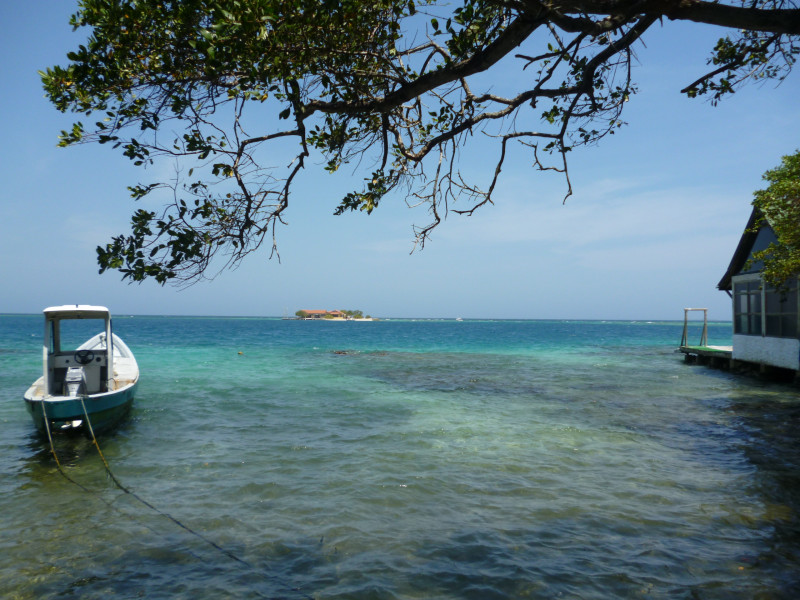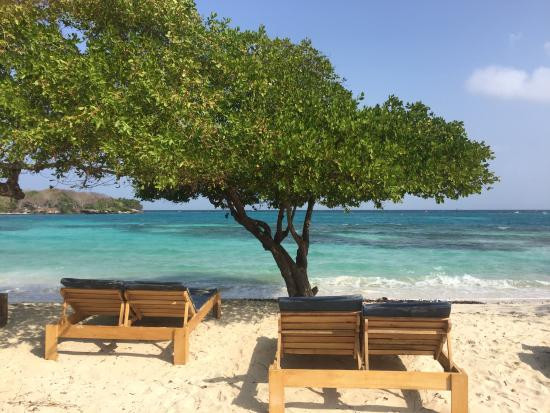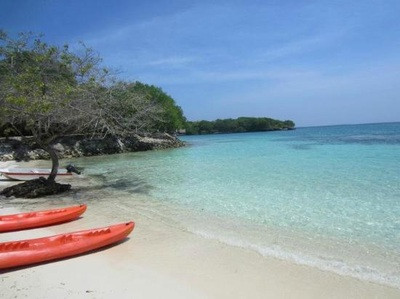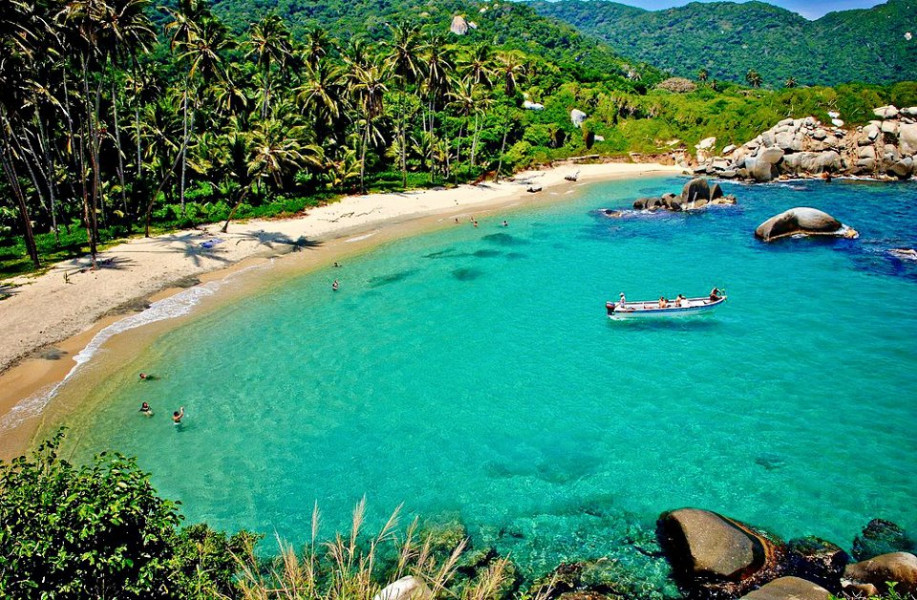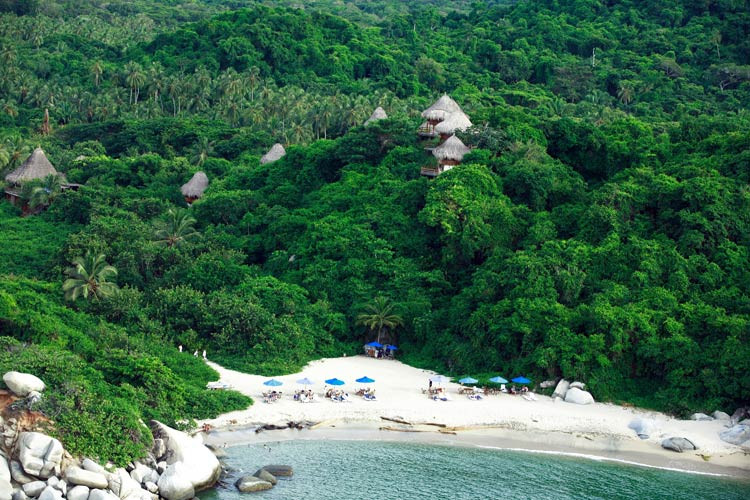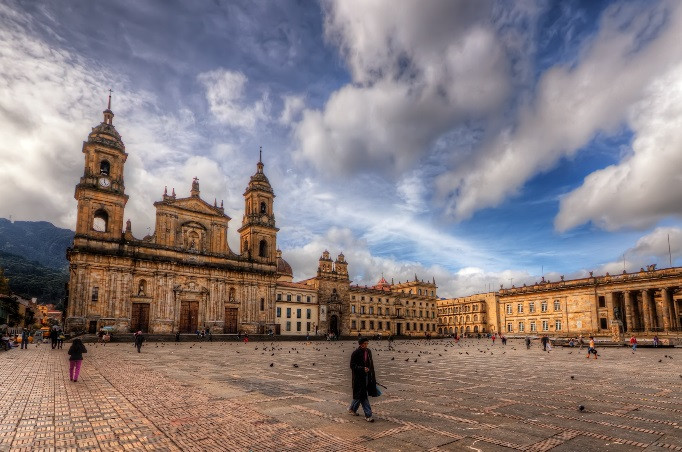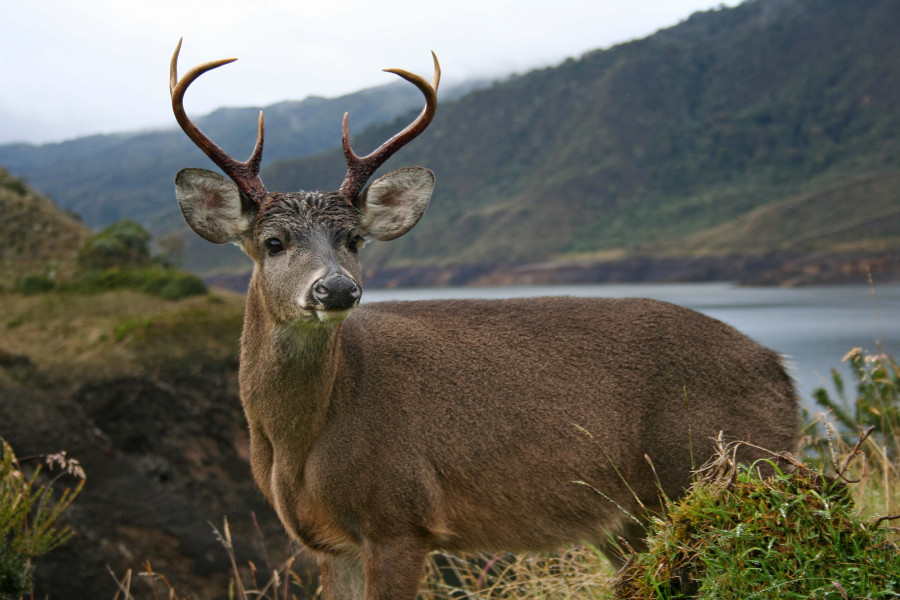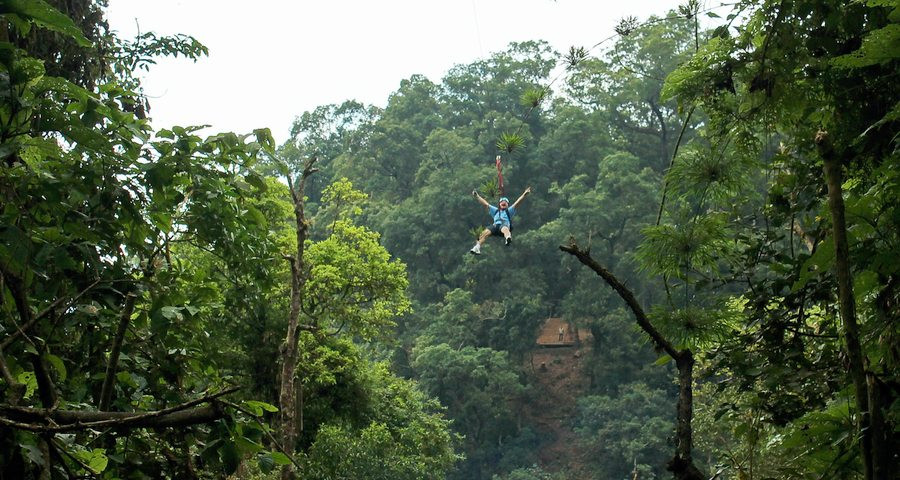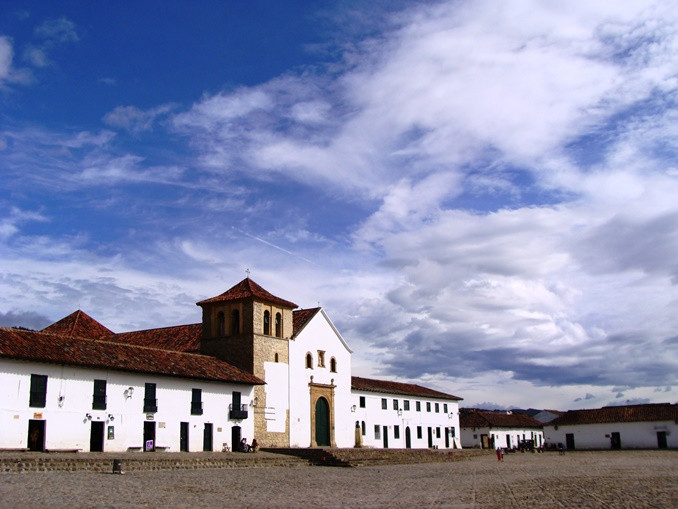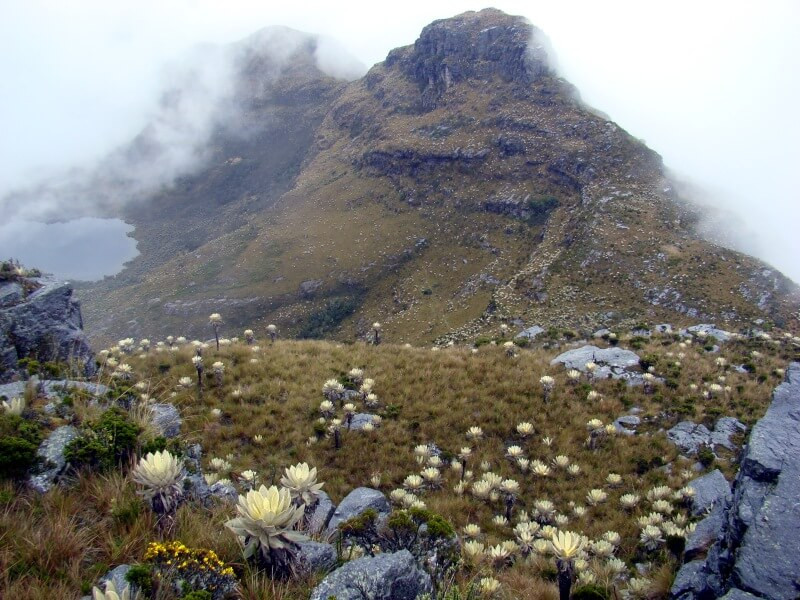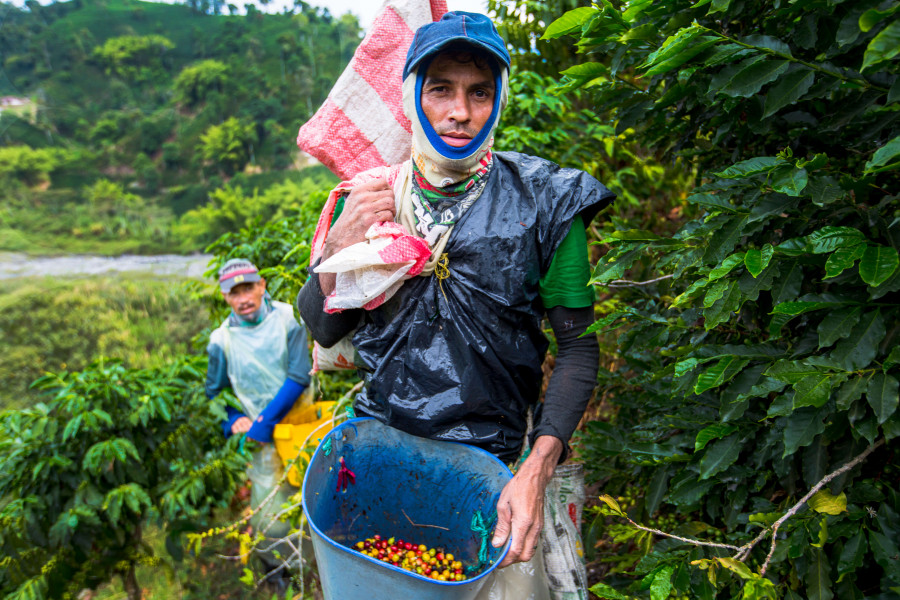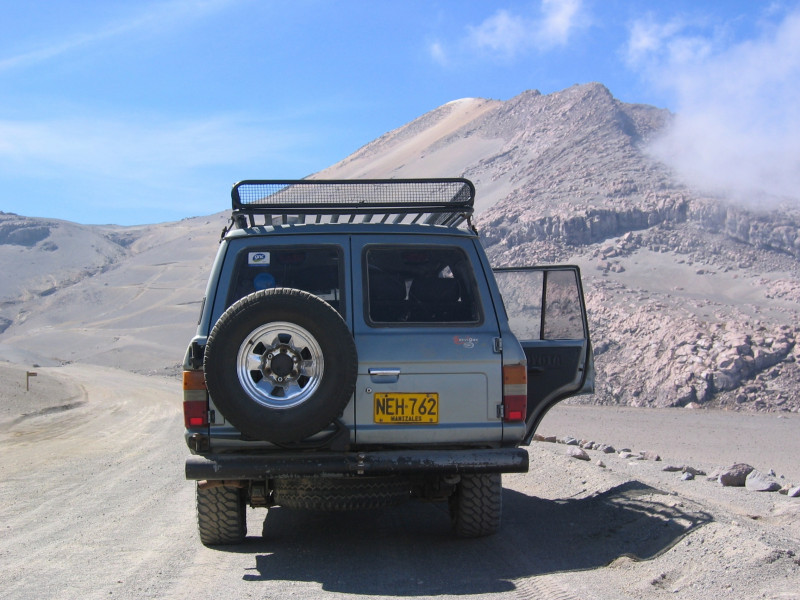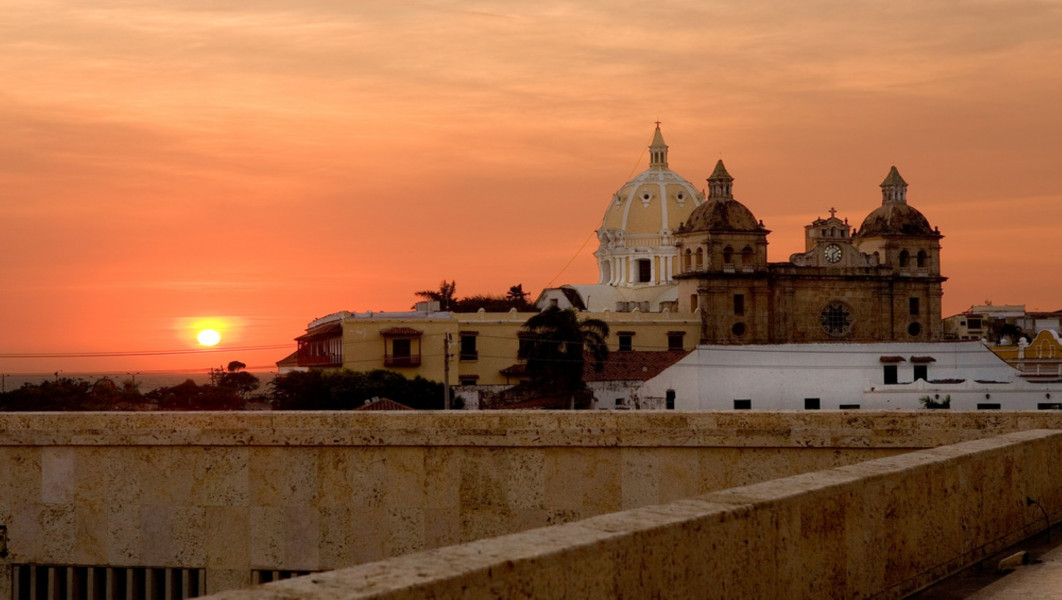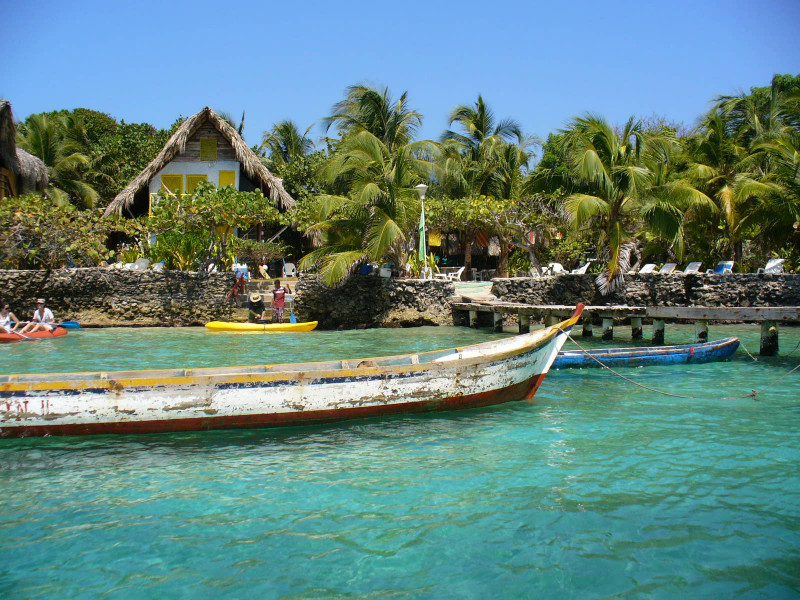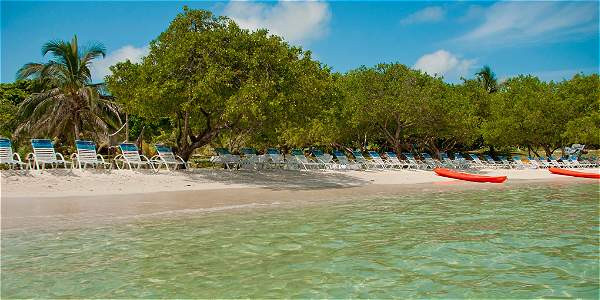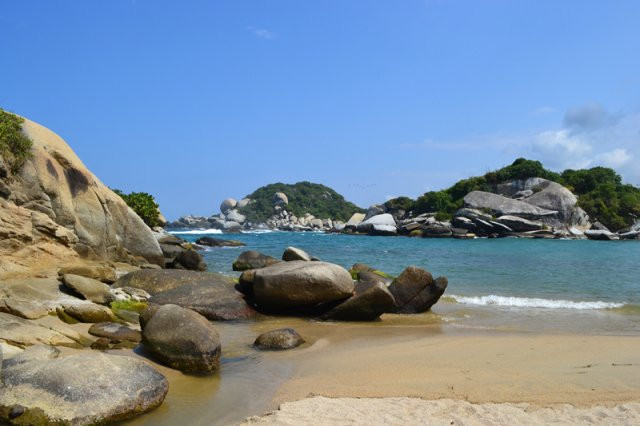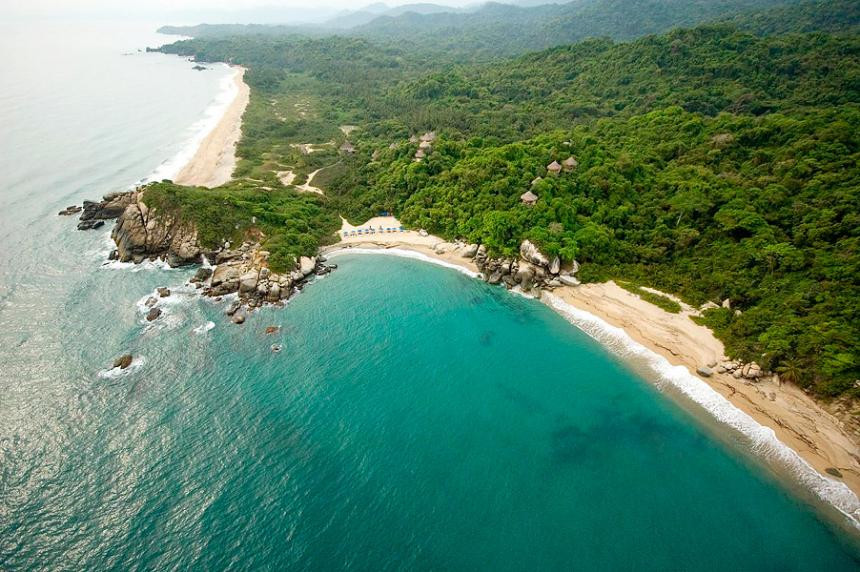Lake Guatavita is something of an enigma and has been the subject of countless myths, stories and legends over the centuries.
This circular lake is located in the mountainous highlands outside of Bogota in what appears to be a meteor crater. The origins of the crater are unclear but it is reputedly
one of the sacred lakes of the Muisca people and widely believed to be the basis of the legend of El Dorado. According to legend, the Muisca celebrated rituals here, in which the Zipa or chieftain (named "El Dorado" by the Conquistadores) was covered in gold dust and performed sacred ceremonies. Venturing out onto the water on a ceremonial raft made of rushes, the Zipa would then dive into the lake, washing off the gold. Gold trinkets, jewellery and other precious offerings were then thrown into the waters by worshipers.
To date, a few gold and silver artefacts have been found at bottom of the lake, lending credence to the legend, but after multiple research investigations over the centuries – including partially draining the lake – no hard evidence has been discovered to prove that this is, in fact, the location of the mythical “El Dorado”. The quest goes on…
This tour offers an overview of the geography of the lake and an insight into some of the myths and legends that surround this location. It is not hard to see why the lake has so intrigued the ancient Musica, the Spanish conquistadores – and, indeed, us today.
Villa de Leyva introduction
Villa de Leyva is Located some 150 kilometres north of Bogota, about four hours by car, passing through stunning savannah landscapes on the way. With its myriad of winding cobbled streets, lined on either side by orange roofed white washed houses, and surrounded by mountains, the village is a charming place to while away a few days. With scarcely a modern building in site and boasting one of the largest cobbled-stoned squares in South America this village where time stands still is a great place to see a snap shot of historical Colombia preserved in its entirety.
The Hosteria del "Molino de la Mesopotamia" used to be an old mill but has been turned into a hotel packed to bursting with antiques and older than the village itself. You can also visit the birthplace of Antonio Ricaurte and the house in which Antonio Nariño lived. The latter translated the 'Rights of Man' into Spanish and both men became important figures in the Independence Movement.
Just outside Villa de Leyva, there are some wonderful walks and excursions that can be made within half a day or a day. Alternatively you can take in some of the other sites such as visiting ancient giant Fossils, Muiscan observatories and indigenous sites or simply out on horseback to enjoy the enchanting scenery.
Read more
Villa de Leyva/Getsemani/2N

